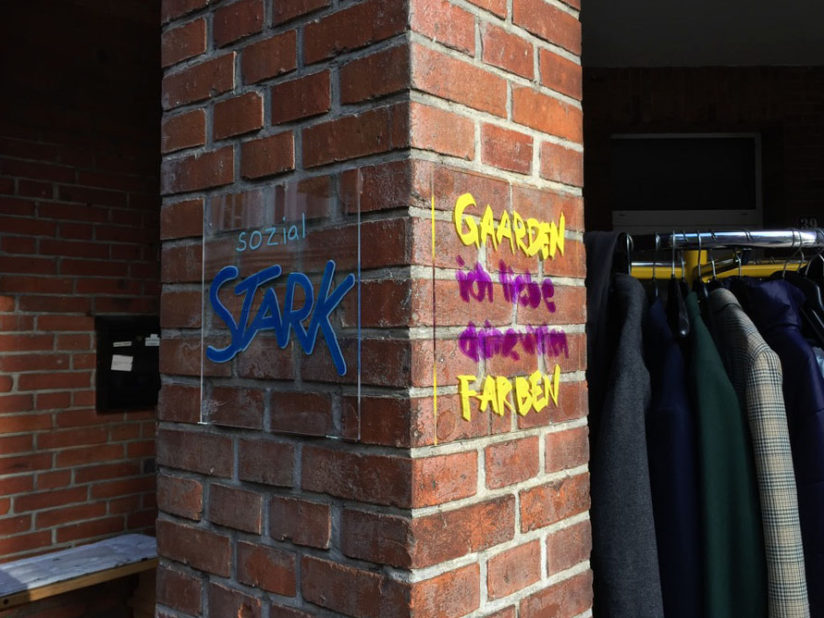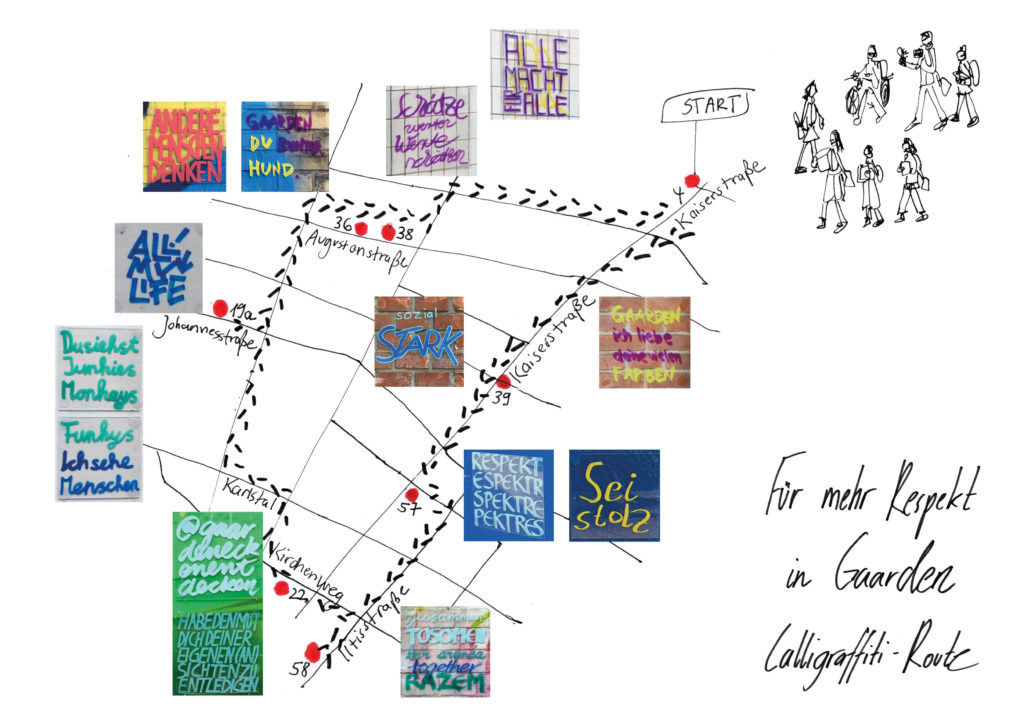 Case studies
Case studies
- Where: Kiel-Gaarden, Kiel, Germany
- Type of space: district, green area, degradated, Closed block structure
- Number of residents: 22 974
- Area size: 4,39 км²
- Organisers/authors
coordinator: Kiel-Gaarden GmbH, a municipal neighborhood coordination body partners: Heinrich Böll Foundation
Case Study
GaardenEckenEntdecken
Reactivating the potential of the neighbourhood by embracing the cultural diversity
What happened?
The focus of this project was on the identification of public spaces perceived in a positive or negative way and on the increase of their potential as meeting and exchange points. During the work in the neighbourhood the focus in fact shifted to theme-based issues, raised by the residents during the process. These issues were taken up artistically and implemented in the form of action days and action weeks as artistic responses to the pressing needs and wishes of the local inhabitants. The themes were More Respect, More Green and More Flowers, More Togetherness, More Safety, and More Cleanliness.
- Who can help?
- local cultural organisations
- youth organisations
- artist organisations
- art and event venues
- local clubs and associations

Why?
The reputation ot the district is, in many ways, far more negative than is the case in reality. Stigmatisation and ethnic segregation are issues. Many locals identify visible issues such as the poor maintenance of streets, pavements, yards, and the deficit of green spaces. Many people feel unsafe in Gaarden.
There is a low level of engagement and innovation in public and community affairs, creating an unhealthy situation where a few dominate, and informal hierarchies are apparent. This has also created distrust between the community and the municipality. changing the perspective on the qualities of the area was a key factor in order to strengthen the identity of the inhabitants and hence, their commitment to the neighbourhood.

How? (tools & methods)
- The process largely followed the structure proposed by cultural planning.
- The team started with mapping activities: participatory activities and a SWOT analysis. Shortly afterwards, the artist joined the team and started to map the cultural resources of the district as well as the emotions and perceptions of local citizens in their neighbourhood.
- There were walks presenting the neighbourhood from different perspectives. In the visioning process the team offered a "Vision tree" for the local community where they coudl put their wishes and dreams.
- In this project designing and implementation can be rather seen as one process and therefore simultaneous. They used poerty slam, artistic workshops, cooking, caligrafitti and light objects during separate events dedicated to issues of the neighbourhood.

For whom?
- The aim of the project was to include people of various ethnic backgrounds as those were mostly underrepresented in participation processes that took place in the neighbourhood so far.
- Another key target group were children and youth. The idea was to empower the young generation in participating in the formation of their living environment and to show them that they can have a say in the development of their neighbourhood.
- How much time is needed?
- 4 months of mapping
- 7 months of visioning
- 8 months of combined desingning an implementing collaborative events
What should you be aware of?
The long-term cooperation with one artist helped to build trust between her and local players and citizens. On the other hand, all creative responsibility during the process was concentrated and dependent on her. A team of artists might have led to more creative diversity and mutual support. Activities should be activated within a short period of time in order to keep the interest and motivation at a high level. The more time there is in between events and projects, the more the process is at risk of losing energy.
What worked out?
- "It was important to raise the interest and the curiosity of the people in their own neighbourhood, to show them new perspectives, and listen to their stories."
